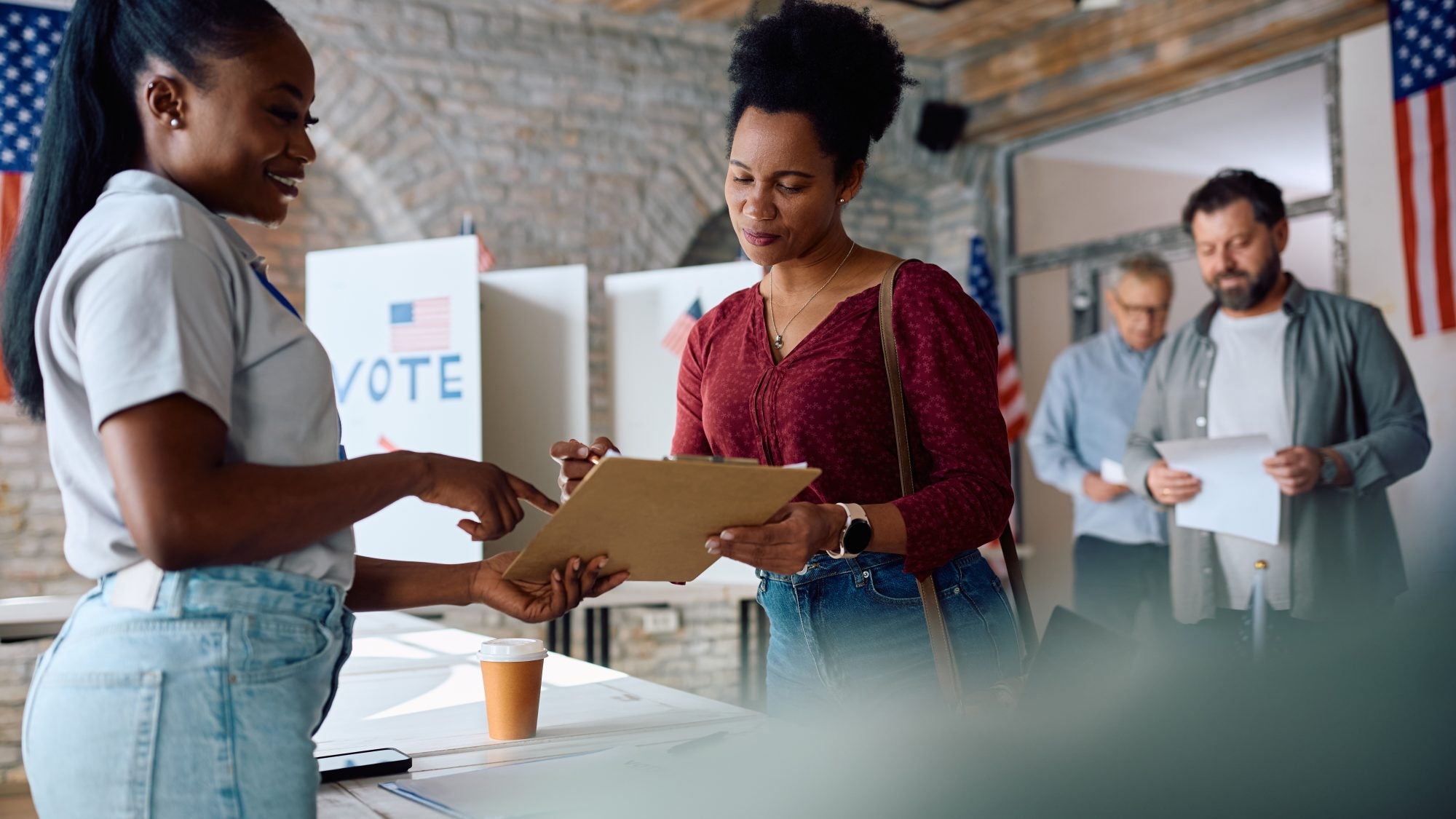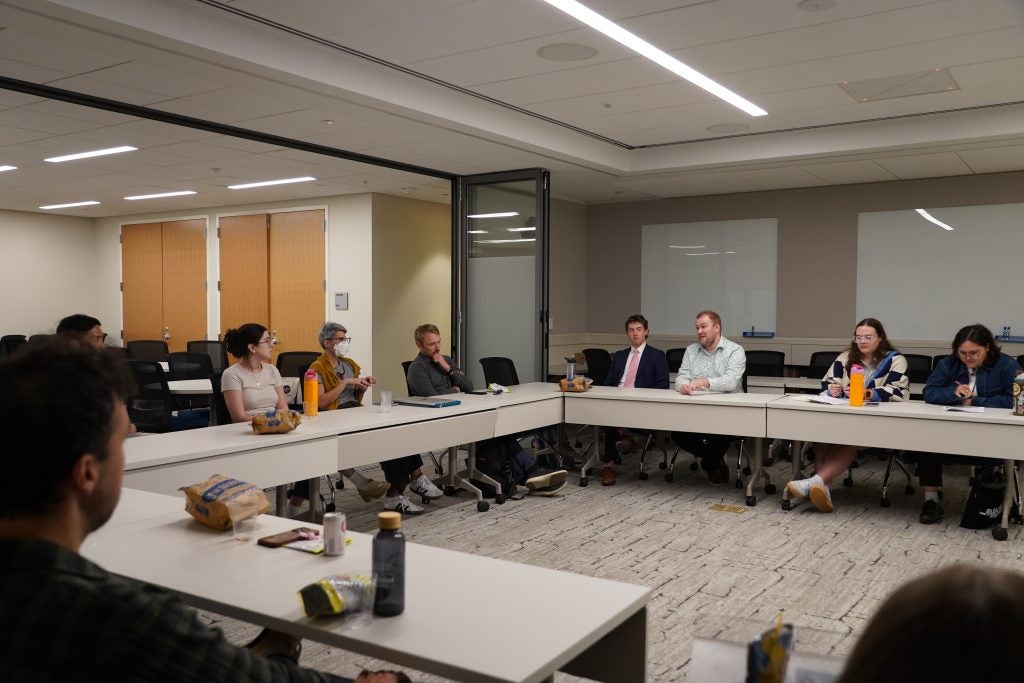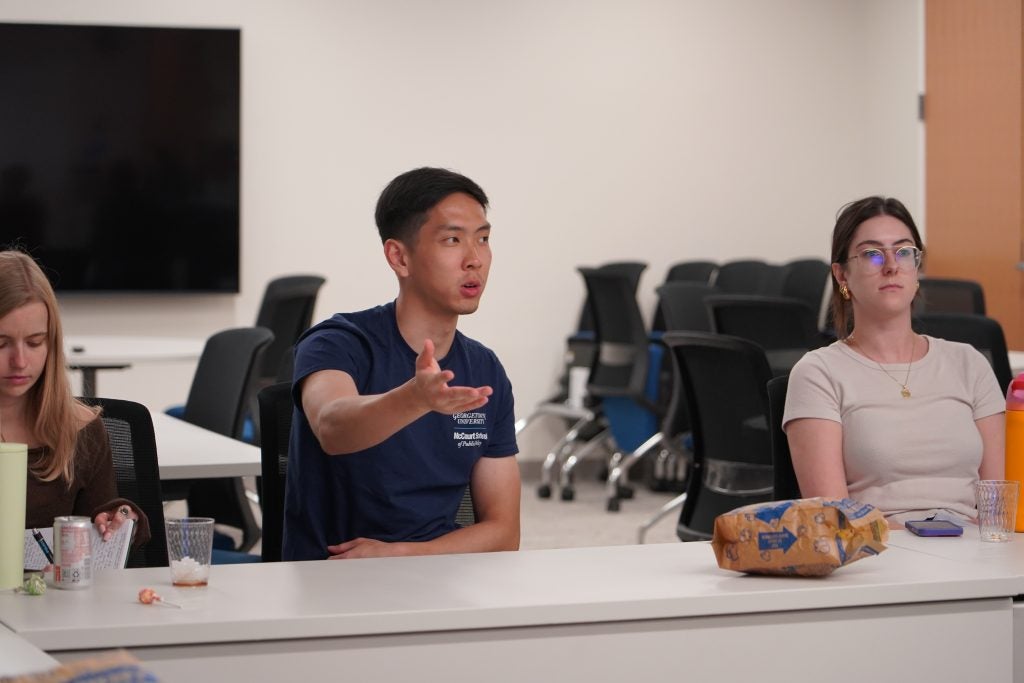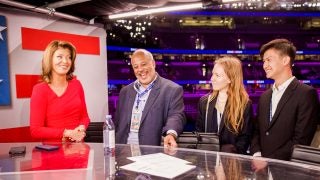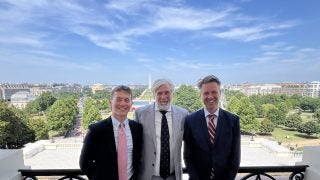Professor Thessalia Merivaki is not an American citizen — at least not yet. But as a Greek immigrant from the birthplace of democracy, she’s fascinated by U.S. elections. At Georgetown’s McCourt School of Public Policy, she studies what she calls “the frontlines of American democracy.”
Her work doesn’t focus on candidates, political parties or even voters. Rather, the bulwark of democracy, according to Merivaki, is made up of often unseen actors in the civic process: election officials. 
Election officials ensure that more than 8,000 U.S. election jurisdictions hold free, fair and secure contests. They are the county clerks, county supervisors and members of local boards of elections who manage voter registrations, distribute mail-in ballots, assign polling places to voters, train poll workers and, at the end of the day, count the votes.
These administrators are at the center of a new book co-edited by Merivaki, an associate teaching professor at the McCourt School and associate research professor at the Massive Data Institute. In Local Election Administrators in the United States: The Frontline of Democracy, Merivaki and her collaborators explore who becomes an election official, how these administrators run elections, and how these professionals navigate high-risk environments when their personal safety is on the line.
“They’re the key point of contact between voters and the election process,” Merivaki said. “They are the ones who, along with poll workers, make elections work.”
With questions over election integrity and foreign interference becoming more prevalent, the work of election officials has only become more pronounced.
“From purely what we would call street-level bureaucrats where they just administer election policies, their role has evolved to voting technology experts, public communicators and cybersecurity experts, especially after 2016,” Merivaki said. “They’re wearing multiple hats, and the scope of their work has completely transformed over the last 20 years, and it keeps changing.”
Amplifying Election Officials’ Messaging
Merivaki primarily studies how election officials communicate with voters. From local paper ads to press interviews and election literature mailings, officials use a variety of tactics to reach voters.
Over the last decade, social media has been another critical tool. During the 2020 election, Merivaki and her collaborator, Professor Mara Suttmann-Lea at Connecticut College, wondered how election officials could still reach voters despite limited in-person interactions during the COVID-19 pandemic.
“[Social media] is a space where exposure and consumption of low-quality information is high,” she said. “It is a challenge but also an opportunity to infuse the ecosystem with accurate information.”
Merivaki started the Election Officials Communications Tracker in 2020 to map the digital presence of election officials. Her team tracks whether officials have websites, what social media platforms they’re on, what they talk about online and how they communicate about the election.
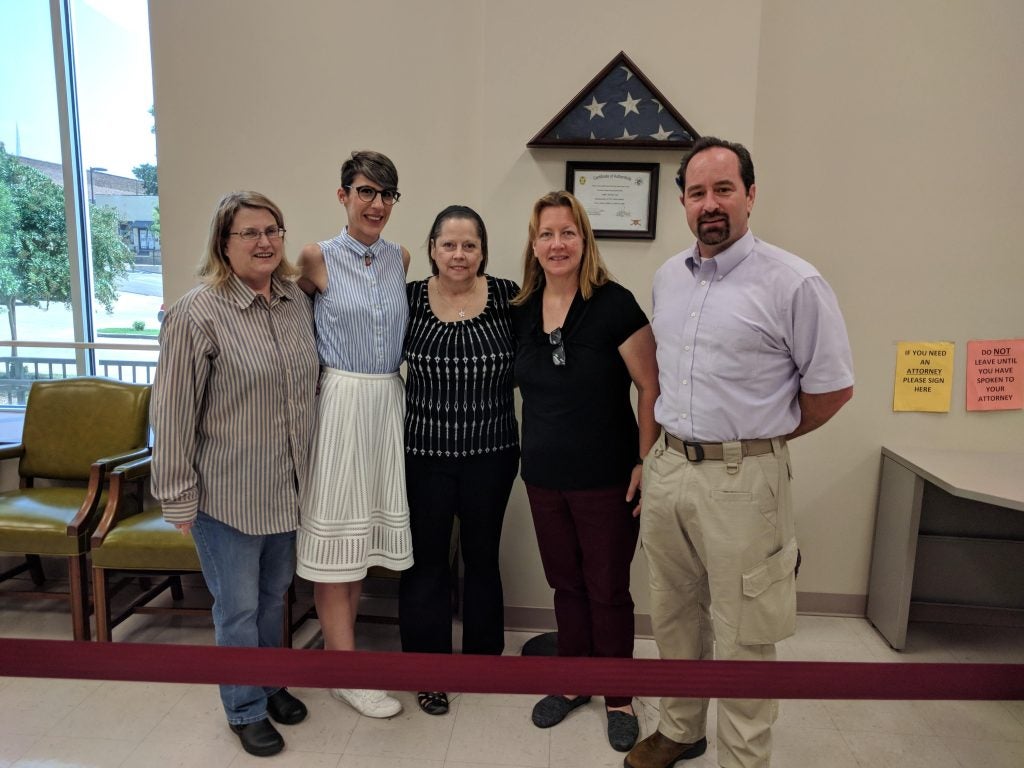
Using a social monitoring platform called Junkipedia, Merivaki and her team, which includes Georgetown undergraduate and graduate students, analyze every social media post from official accounts of election officials nationwide. The team uses a codebook to label content, such as tracking whether posts include links or visuals and how officials talk about the election, from voter registration deadlines to post-election audits.
From analyzing data from the last two elections, one of Merivaki’s key findings is the importance of clear and focused messaging. When election officials share explicit instructions and clear information, it tends to lead to higher voter registration rates and valid mail-in ballots, she said.
“When it comes to communications about processes work and how to access voting, drowning the message, or sharing information about different things and not being very clear about what you’re communicating, can make it more difficult for voters to get the information they need,” she said.
The data also shows higher degrees of voter trust in elections when election officials explain the various safeguards in place to secure the electoral process and emphasize that several of these processes are done in a bipartisan manner, she said.
Since she started her work, Merivaki said many election offices and federal agencies like the U.S. Election Assistance Commission have incorporated her findings into their communications and toolkits.
While every state election official uses social media, reaching voters can still be a challenge. This can be especially the case with local election officials, many of whom don’t have official social media presences, she said.
“That doesn’t mean they cannot reach voters, of course, because there are other ways that they reach them in person,” Merivaki said. “But finding ways for voters to be aware that their election officials exist, and to follow them and get exposed to their messages, that is a challenge.”
Voter Communication Trends in the 2024 Election
With the 2024 election coming up, Merivaki is tracking new trends in communications from election officials.
One trend is increased messaging around how votes are processed to counter concerns about election security.
“We do see a shift in communications to emphasize these are the processes that we [election offices] implement, not only in our state but in all states, to ensure when you cast a vote, it will count,” she said. “We see a lot of signaling and usage of keywords that address those concerns implicitly, and explicit messages connecting the process to the outcome, that elections are counted accurately.”
Merivaki’s team has also noticed more community-focused messaging from election officials. This includes campaigns to spotlight and humanize election officials and poll workers to build trust between the electorate and the electoral process. The campaigns are often accompanied by greater messaging on the nonpartisan work of election officials, even though many are elected as members of political parties, she said.
“[It’s] what we call the ‘friends and neighbors framing,’ to remind voters when you go to vote, people who you see in your community and in your polling place are people from your networks, friends and neighbors,” Merivaki said. “They are invested in making this democracy work, so you should be a part of that community.”
A Researcher in Action
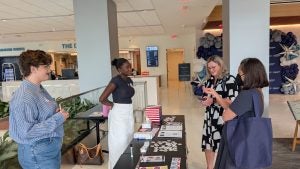
Merivaki extends her work beyond writing research reports on election officials. She’s in the field at Georgetown every day, dedicated to getting students involved in the political process.
When she taught at Mississippi State University, Merivaki worked with student leaders to organize voter registration drives. Now at Georgetown, she’s just as eager to get students civically involved.
One of the first things Merivaki did at Georgetown was to contact GU Votes and the McCourt Student Association to see how she could contribute. With their collaboration, Merivaki has already helped educate the Georgetown community on electoral processes and mobilized Hoyas to vote, which included a voter registration drive at McCourt’s new home at 125 E St. on the Capitol Campus.
In October, Merivaki hosted a screening and discussion of The Officials, a new short documentary highlighting the work of American election officials.
